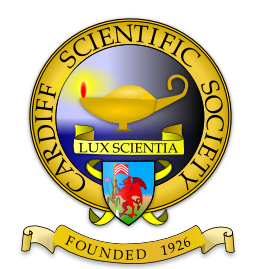☰ Cardiff Scientific Society


Presidential Address: Fishy Science
Prof Robert John
Cardiff University

From Neutron to Michelangelo - a History of Our Universe So Far
Dr Peter Blake
Cardiff University

Scientific Tradition in Wales
Professor Phil Williams
University of Wales, Aberystwyth

Estimating the Time of Death
Professor Bernard Knight CBE
University of Wales College of
Medicine, Cardiff

Conversion of Energy in the Biological World
Sir John Walker FRS, Nobel Laureate
MRC, Cambridge

Silicones, Their Chemistry and Practical Applications
Dr Richard Taylor
Dow Corning, Barry

Perspectives on the Psychology of Advertising
Professor Fairfid M. Caudle
The College of Staten Island, City University of
New York, USA

200 Years of Science at the Royal Institution
Professor Richard Catlow
Wolfson Professor of Natural Philosophy, Royal Institution of Great Britain

Topical Issues Relating to the Food Standards Agency
Professor Sir John Krebs FRS
Food Standards Agency

Investigating the Paranormal: A Sceptical Perspective
Dr Richard Wiseman
Perrott Warrick Research Unit, University of Hertfordshire and
Member of the Magic Circle

The Battle of the Sexes: a Struggle for the Male
Professor leuan Hughes
University of Cambridge
